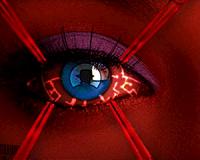| . |  |
. |
Austin TX (SPX) Nov 16, 2010 The source of HIV infection in two separate criminal cases in which men were convicted of intentionally infecting their female sexual partners was confirmed by scientists from The University of Texas at Austin and Baylor College of Medicine using evolutionary forensics. The research shows it's possible to identify the source of a cluster of diseases by analyzing the evolution of a virus within its host and between individuals. This type of research is known broadly as phylogenetic analysis. In the cases, State of Washington vs. Anthony Eugene Whitfield and State of Texas vs. Philippe Padieu, it was shown that Whitfield and Padieu knowingly spread HIV to multiple female partners through unprotected sex. Dr. David Hillis, Dr. Mike Metzker and their graduate students were able to pinpoint these two origins of the women's infections from blind (identities unknown to them) blood samples. "Our research demonstrates that the source of a disease transmission cluster can be identified through phylogenetic analysis," said Hillis, the Alfred W. Roark Centennial Professor at The University of Texas at Austin. "This kind of analysis can and has been used both to exonerate the falsely accused as well as evidence in convictions." The scientists published their results in PNAS Early Edition. HIV evolves rapidly within infected individuals over the course of a few months, so the viruses cannot be compared between a source and a newly infected individual for an exact match. It's not as easy as directly comparing two individuals' DNA to confirm paternity. Even two samples of HIV from the same person, taken several months apart, will be different because the virus is evolving so quickly. "Within a given person, there is not just one strain but a population of strains because HIV mutates all the time when it makes new virions (viral particles)," said Metzker, associate professor at Baylor. "During transmission, however, there is a genetic bottleneck in which only one or two viruses get transmitted to the recipient." In order to understand the origins of the infections of the women victims, therefore, the scientists needed to reconstruct the evolutionary history of the viruses. To do so, Metzker's lab at Baylor College of Medicine first isolated and sequenced the HIV genes from blind blood samples taken from the accused, from the victims and from other HIV positive individuals who lived in the same area as the victims and the accused. Metzker sent the gene sequences (still blind to identity) to the Hillis lab at The University of Texas at Austin, where they constructed evolutionary histories for the viruses by performing the phylogenetic analysis. In each of the cases, they identified the sample from the unknown individual that shared the subsets of HIV genes that were related to the other individuals in the case. "This individual was the only person who could have infected the others," said Hillis. In each case, the source individual was revealed at the trial to be the defendant when the blinded code numbers on the blood sample were revealed to the court. "We didn't know that information until the trial," said Hillis. "We just new that we had identified the only person whose HIV population was consistent as the source of the multiple infections." Hillis served as an expert witness in Washington vs. Whitfield and worked on the forensic analysis for Texas vs. Padieu. In neither case was he called to testify. He did testify in a landmark trial in 1998, the State of Louisiana vs. Richard J. Schmidt, about the use of phylogenetic analysis in viral transmission cases.
Share This Article With Planet Earth
Related Links University of Texas at Austin Cyberwar - Internet Security News - Systems and Policy Issues
 State-led cyberterror set to rise: report
State-led cyberterror set to rise: reportRedwood Shores, Calif. (UPI) Nov 15, 2010 State-led cyberterrorism is expected to rise in 2011, a white paper issued by Imperva data security company said Monday. Imperva said its predictions for the Top 10 security trends for 2011, compiled by the company's Application Defense Center, were aimed at helping information technology security professionals defend their organizations against the next onslaught of cybersecurity threa ... read more |
|
| The content herein, unless otherwise known to be public domain, are Copyright 1995-2010 - SpaceDaily. AFP and UPI Wire Stories are copyright Agence France-Presse and United Press International. ESA Portal Reports are copyright European Space Agency. All NASA sourced material is public domain. Additional copyrights may apply in whole or part to other bona fide parties. Advertising does not imply endorsement,agreement or approval of any opinions, statements or information provided by SpaceDaily on any Web page published or hosted by SpaceDaily. Privacy Statement |